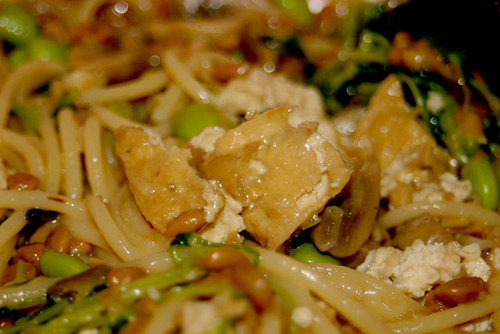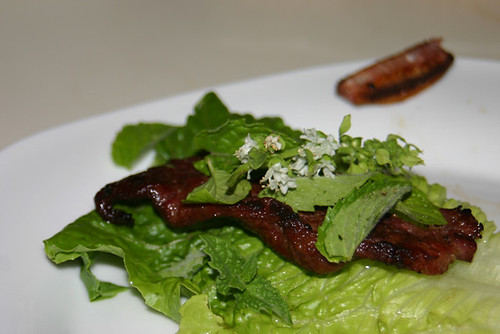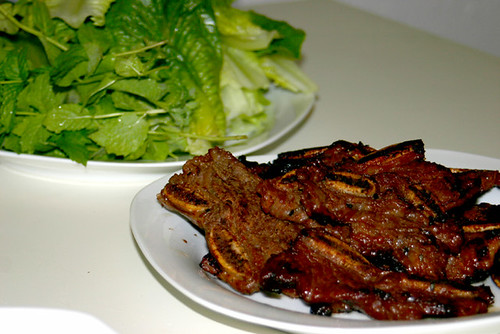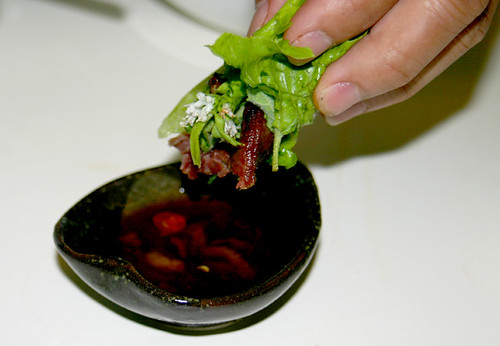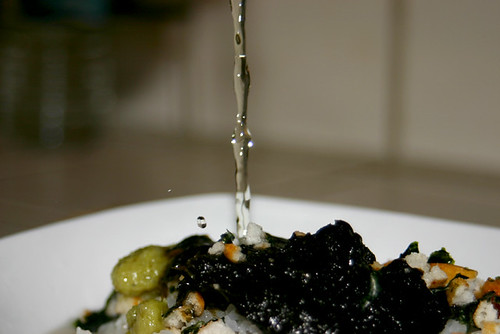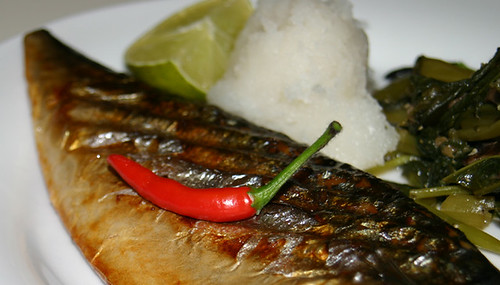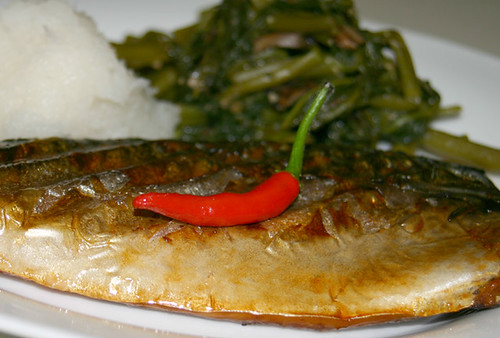
Abura-age: Oil-fried.
The second word is a-ge, with e as in hem, not age as in the years you have been alive...
Anyway, it is interesting that the two words that literally translate to "oil-fried" always indicates fried tofu in Japanese. It's not like we don't deep fry other things, but if it's oil-fried, it's always tofu.
 I have read that it is relatively easy to make abura-age at home, although I have yet to try it. It requires pressed out water from already firm tofu, flash frying once in high heat, followed by slow frying in lower heat. It sounds easy enough, but when perfectly good abura-age is so readily available in the JP grocery stores nearby, it's hard to get deep frying going at home.
I have read that it is relatively easy to make abura-age at home, although I have yet to try it. It requires pressed out water from already firm tofu, flash frying once in high heat, followed by slow frying in lower heat. It sounds easy enough, but when perfectly good abura-age is so readily available in the JP grocery stores nearby, it's hard to get deep frying going at home.The commercially bought abura-age can be a touch stale, although it comes back to life nicely by abura-nuki (oil-removal). It has a fancy term, but all it involves is either blanching the abura-age or washing their surfaces with boiling hot water. The deep frying process creates air pockets inside the tofu and with a little extra handling, abura-age fluffs up like comforters in the hot summer sun!
 Once fluffed, these pillows are extremely versatile. It can be baked in the oven or stewed in soups. They can be enjoyed alone as is as slices of smaller pieces or it can be stuffed with all sorts of ingredients. I tend to fill them rather than use them alone. Some of the many things I have stuffed them with are natto, hijiki seaweed, cabbage, mushrooms of all kinds, barley, and a combination of many of these goodies. I have even dropped a raw egg inside the abura-age pocket and cooked the eggs in its pockets inside broth. These pockets can be tied with the dried Japanese root vegetable, kanpyo (more terms!), or simply closed with a tooth pick.
Once fluffed, these pillows are extremely versatile. It can be baked in the oven or stewed in soups. They can be enjoyed alone as is as slices of smaller pieces or it can be stuffed with all sorts of ingredients. I tend to fill them rather than use them alone. Some of the many things I have stuffed them with are natto, hijiki seaweed, cabbage, mushrooms of all kinds, barley, and a combination of many of these goodies. I have even dropped a raw egg inside the abura-age pocket and cooked the eggs in its pockets inside broth. These pockets can be tied with the dried Japanese root vegetable, kanpyo (more terms!), or simply closed with a tooth pick.I stuffed mine today with left over udon noodles from dinner last night, which is something I learned at En, the new Izakaya that opened last month which serves a nice selection of oden. It had never occurred to me before to fill abura-age with anything but vegetables, but I liked the concept very much. The problem, though, was that it was like combining something relatively plain, flavor-wise (abura-age), with something more plain (udon). So I decided to add either kimchi or nori seaweed in the pockets alongside the udon for my version. These were then added to a line up of other hot-pot trimmings like vegetables and fish cakes and simmered in the broth for a few minutes.
I have to say - the upgraded flavor punches definitely made a big difference! In comparing the two pockets, the nori one definitely had better fragrance and a more delicate combination of scent and texture, but boy, the kimchi one was the winner for sure! It packed a kick of crunch that highlighted itself very nicely against the pillowy abura-age and the flavor-injected udon noodles!
Nori vs Kimchi Battle #1: Nori 0 - 1 Kimchi





